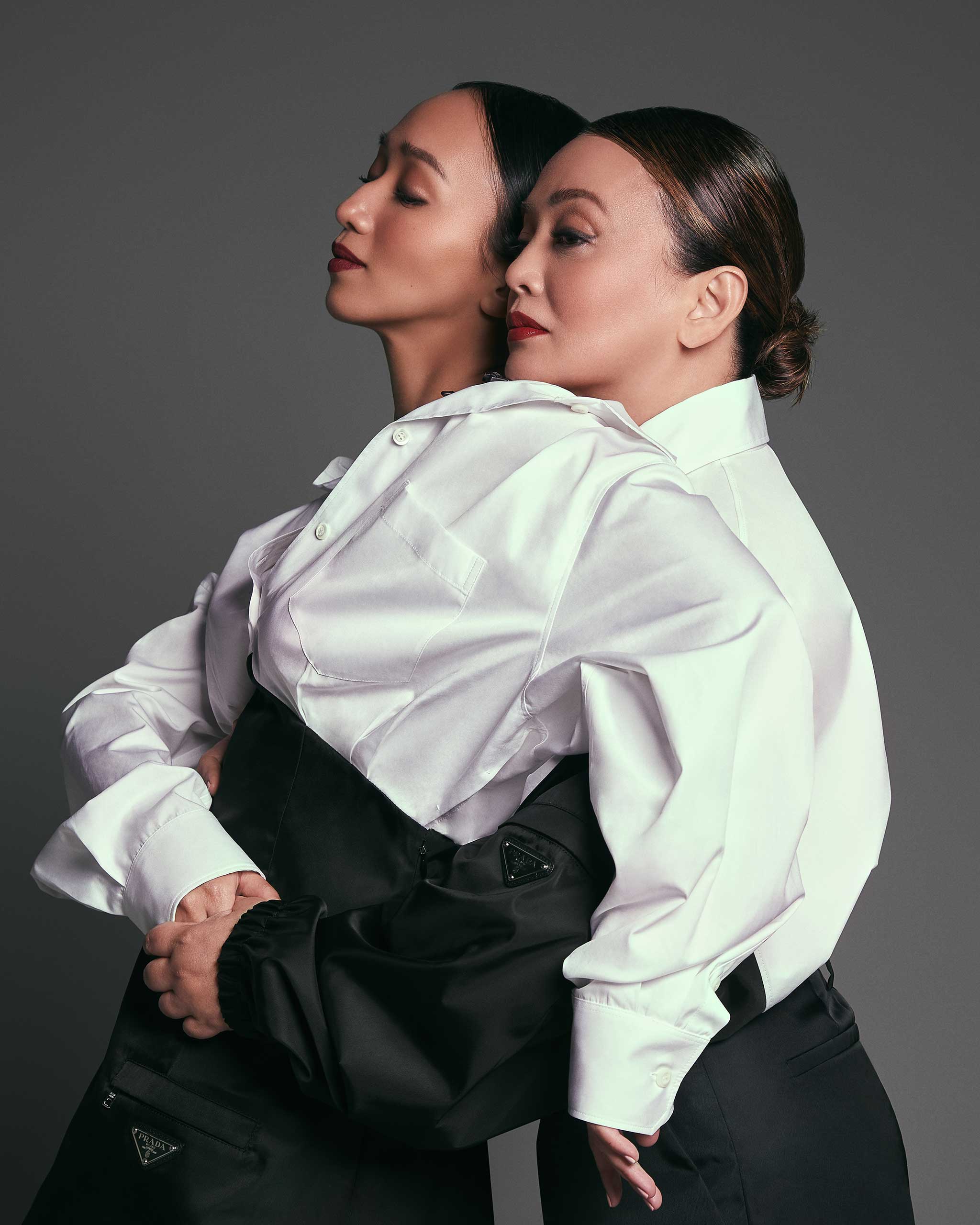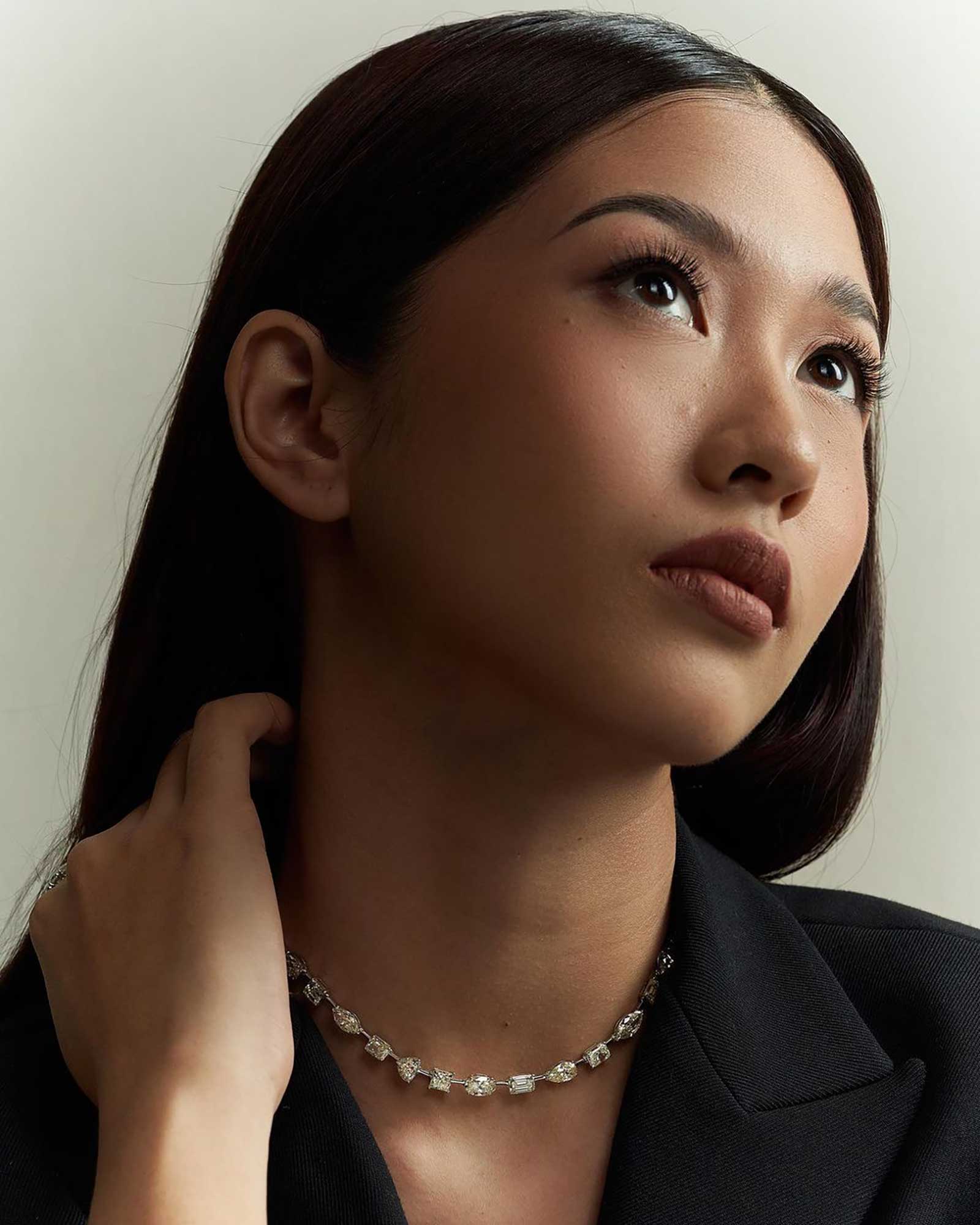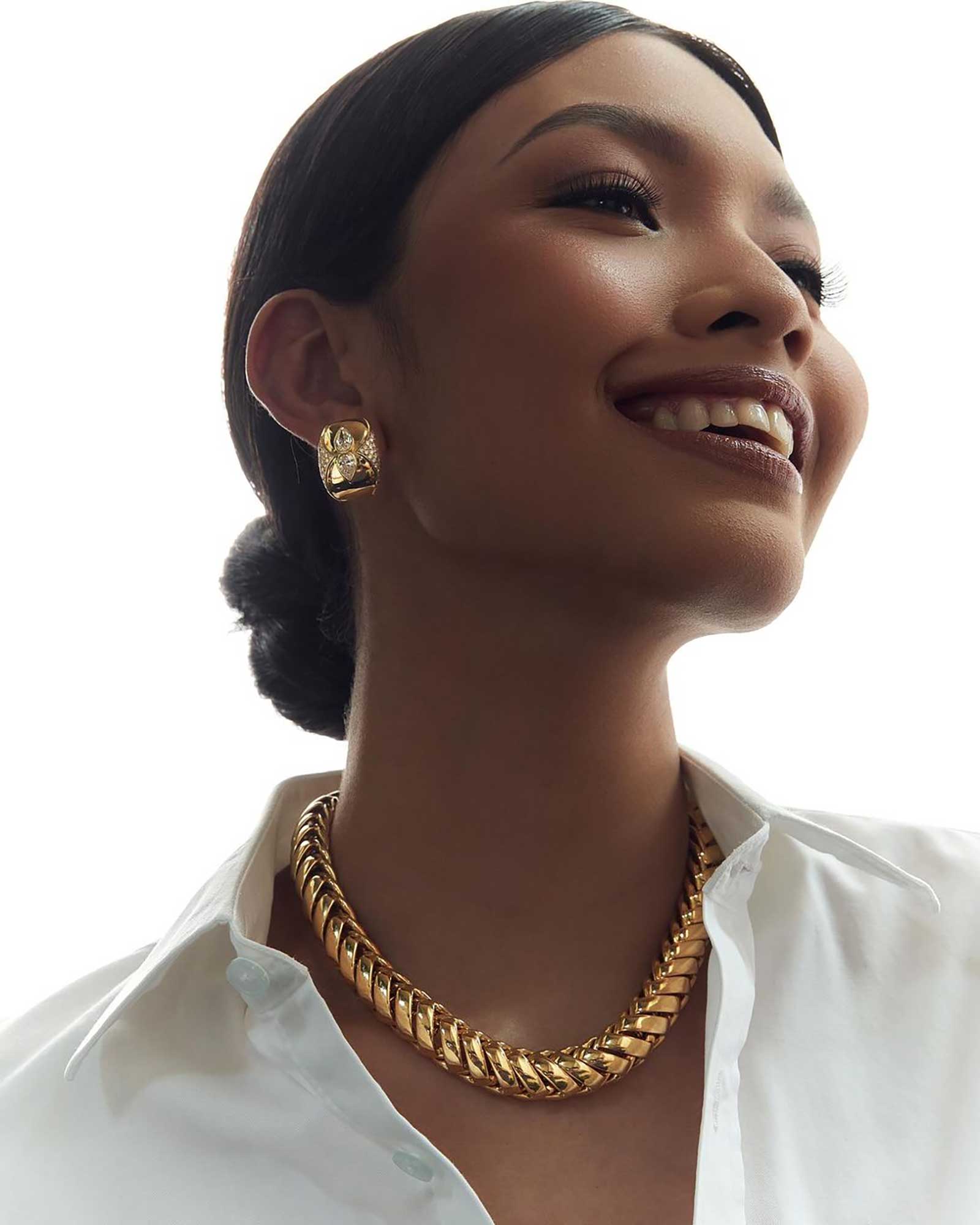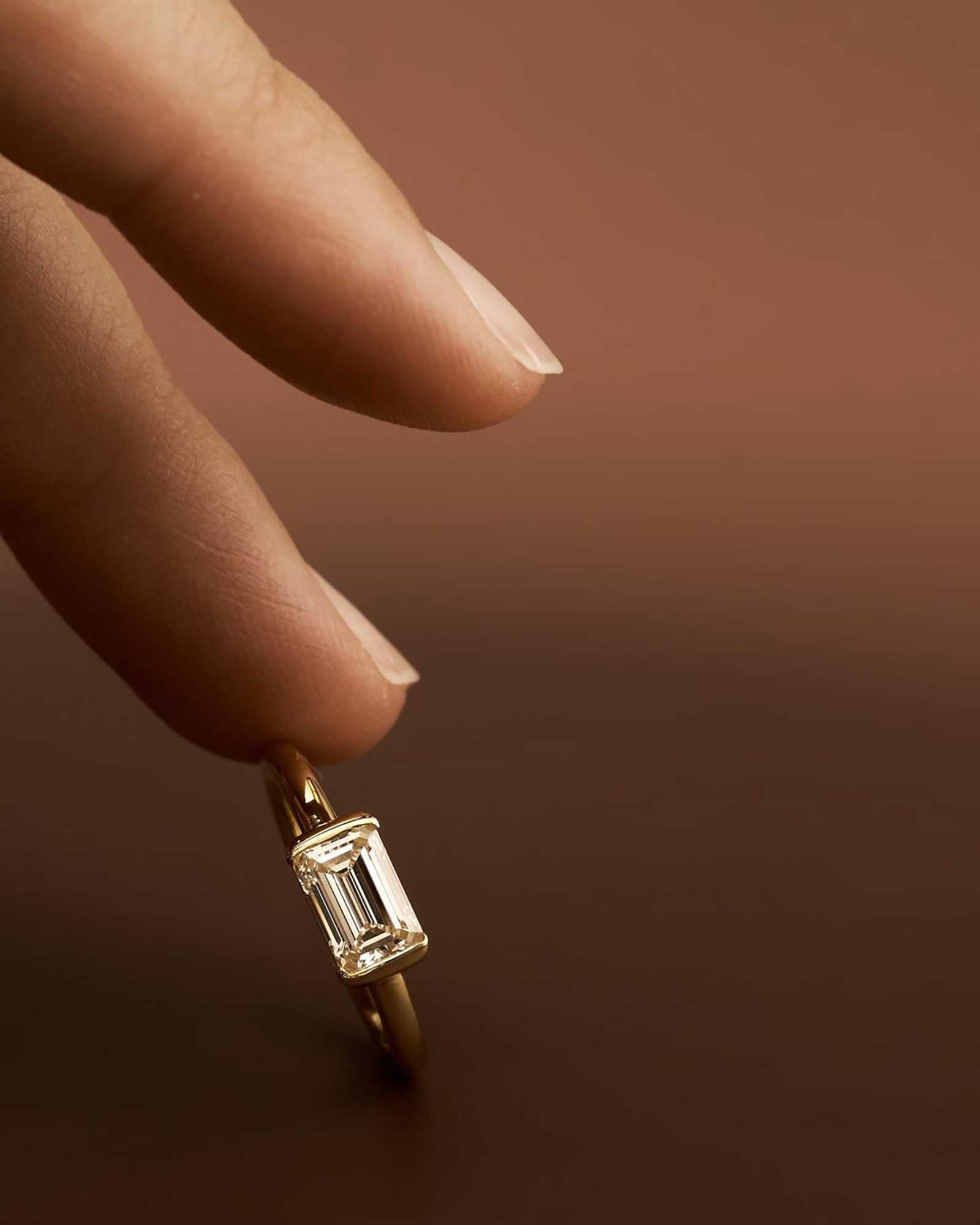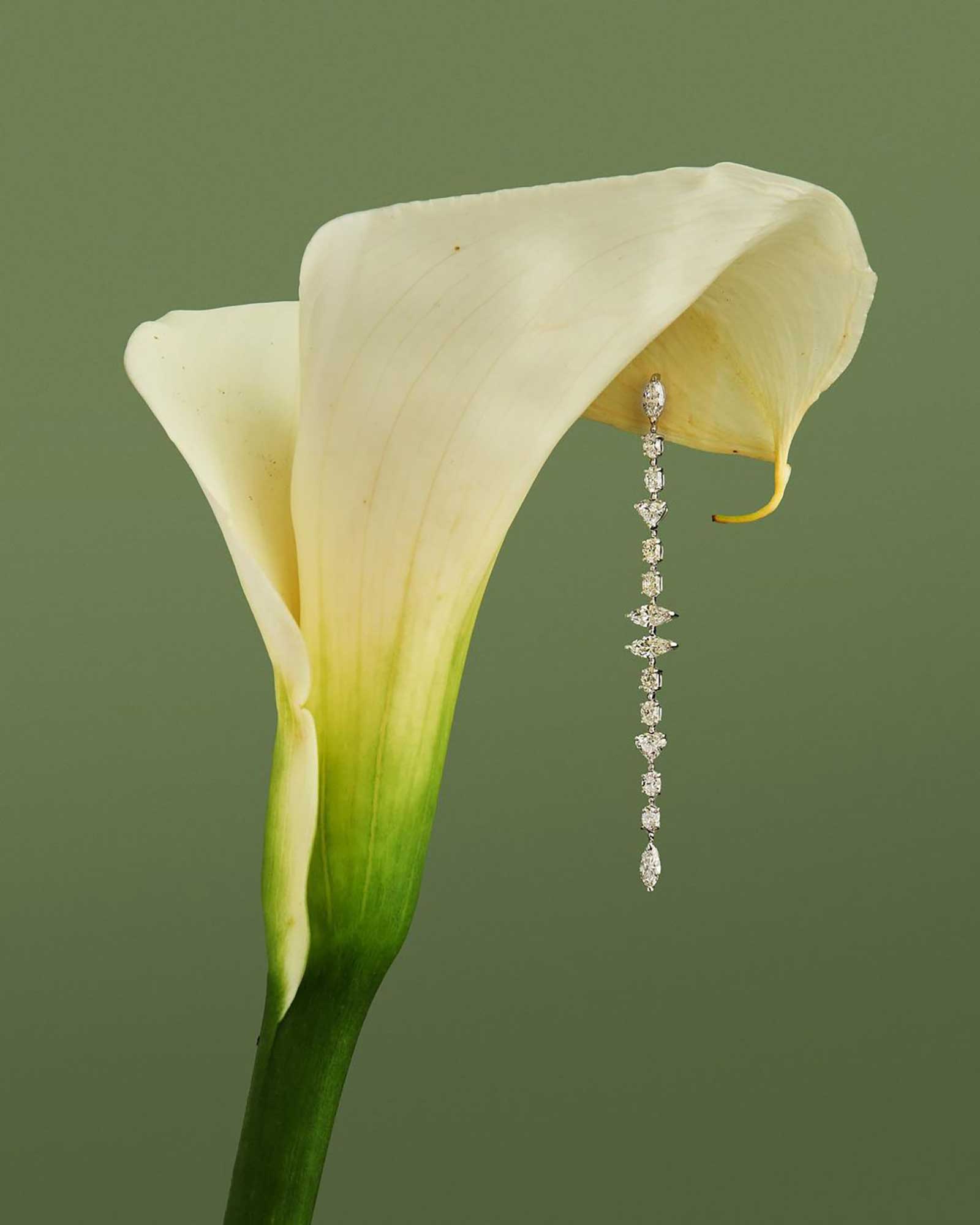Photo by Josh Tolentino
JMA Jewelry founder and designer Suzette Ayson talks to Vogue Philippines about inheriting her love of the craft from her mother, passing it on to her daughters, and building a brand on the idea of family.
On February 8, 2024, Suzette Ayson will host the sixth iteration of Vogue Talks, joining Francis De Lara creative director John-Paul Pietrus and an audience of aspiring creatives and entrepreneurs for a conversation on jewelry design and how to build a brand. To hear their insight in person, secure your spot at the event by getting a 3-month subscription to Vogue Philippines, exclusively available on shop.vogue.ph.
Suzette Ayson is the type of person you’d immediately confide in upon meeting her. “Apparently, they spill out everything,” she laughs, telling Vogue Philippines that it’s the quality she’s most often told she’s known for. “I’m very straightforward when I talk to people.”
It might be attributed to the art of the trade; fine jewelry is an intimate business, after all. More than the clothes that live in a wardrobe for a season, precious stones and valuable metals are crafted into pieces made to carry with you throughout a lifetime.
But perhaps this quality of openness is something intrinsic to Ayson, who’s built her decades-long career on fostering relationships with her now-loyal clientele, to the point where she can almost akin them to family. “When it [comes to] family, you know you want to do right by them,” she tells Vogue Philippines. “So that’s the concept of JMA Jewelry, to make everyone a part of the family.”
Being a third-generation jeweler, building a brand on the foundation of family wasn’t an entirely novel concept to Ayson. She grew up immediately immersed in this bright and shiny world, finding her footing in the industry as early as a teenager. “I started professionally selling jewelry with my mom at 13 years old, believe it or not. At 13! So I’ve been doing this for 48 years,” she says, eyes wistful. “Among all five [siblings], I was the one who was really tagging along with my mom, buying pieces of raw materials, going to the plateros (jewelers), drawing the designs—up to the point of selling [the finished product].”
It might seem like it, but this foray into jewelry was never something that she was forced into. “I was really into it from the very start,” she stresses. In venturing into anything, “I think the most important thing is that you are interested.”
She still remembers the moment she fell in love with her craft, tracing it back to a vivid memory of herself around the age of 7, when she watched as her mother added the final flourishes to her elegant evening gowns. “She would be wearing those nice earrings,” she smiles, gazing up at the memory. “But the lure of it started when I really saw the raw materials, not even the finished items.”
To her younger self, it was most mesmerizing first seeing the glimmering gemstones that her mother would later don in its raw state. “You know, seeing the gold as it is, seeing the diamonds as it is, and then realizing, ‘Wow, this is how it’s made. How fantastic. How interesting.’”
A lasting vision
Her falling into the business could be summed up to the challenge posed by the jewelry-making process. How do you take these raw materials and shape them up into finely crafted pieces to cherish through the years? The thought led her to found JMA Jewelry Center in 1995, offering unique pieces that she just wasn’t seeing in the market. “One of the things that I really wanted to happen was to see from the design—from the conception—to the finished product. I wanted to be there all the way,” she explains. “We were focused on making [jewelry that can be] a part of [our customers’] daily lives.”
At the time, Ayson was admittedly frustrated, seeing fleeting trends fly by the jewelry industry rather than pieces made to last. Her offerings were, and still are, designed for the everyday. “It’s not something that you bought on a whim. It’s well-thought-out, designed for you. It’s bespoke. That’s our strength. Our strength is our credibility, our strength is our integrity. So, we’ve been here a long time because of that.”
When asked if there is a specific type of woman she designs for, she responds simply: “None that I could think of.” Each piece she designs is meant to be deeply personal to whoever it’s for. “Before I put my pencil on the paper, I have to make sure that it’s the right one for the client, especially. I think that’s one thing that sets me apart from a lot of jewelers,” she says. “I have to have that conversation first with them. I have to properly profile them.”
Communication is one factor that highly contributed to the success of her brand, she says, and it’s something that she hopes to impart to aspiring designers and entrepreneurs at her upcoming Vogue Talks with Francis De Lara creative director John-Paul Pietrus. She explains, “That’s the first step to the design process: when you talk to a client. They come here, they have a specific thing in mind, and it’s [an] exchange of ideas.”
Family values
While a designer’s creative vision often ebbs and flows with whatever inspires them at the moment, Ayson’s is based on the relationships she nurtures with each one of her clients. It’s a design philosophy that she likens to her role as a mother. “I think differently. Why? Because I have children,” she smiles. “I want to somehow understand how the world is evolving at this moment.”
In raising her daughters, she’s learned that “I cannot just be stuck with what I know.” It’s helped her better take on her roles as owner, president, and designer at JMA Jewelry. She expands, “I have to listen to younger people and probably merge whatever I know [with] what they know and then come up with a very unique design. That’s how things are born.”
With family ties that bind every aspect from conception to selling the finished fine jewels, it’s only fitting, then, that her own daughters Trish and Stephanie fell into the business the same way she did—naturally, and without force. “It all came from them. I never lured them into coming into my company, but now that it has reached the height that it has, I’m just very happy that they did. And you know, there were hits and misses. There were a lot of struggles, a lot of pain going through it,” she says, still smiling even as she recounts the memories. “But at the end of the day, you’re a family. That’s the most important thing.”
- On February 8, Vogue Talks Returns With A Conversation On Craft and Creativity
- For Michael Cinco’s New Jewelry Line, Minimal Lines and Organic Shapes Are “Inspired By Nature”
- Kendall Leads The It-Girls On The Jacquemus SS24 Runway—In Jewelry Inspired By Princess Diana
- Living The Dream: Gucci’s High Jewelry
